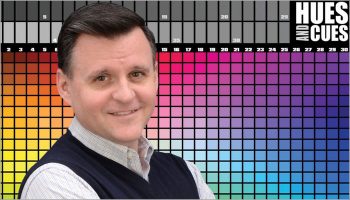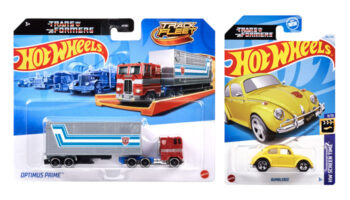Sound decisions: Sound Engineer Lucie Lux discusses putting effects, voices and music in toys

Lucille Lux… Your LinkedIn profile says you’re a Sound Engineer at So Sound. That scarcely does it justice, though! What does your role typically involve?
I think the whole So Sound team would agree with me in saying that no two days are ever the same – which is great! One day of the week, I’ll be recording a corporate voiceover in French, the next I’ll be hard at work designing the perfect ‘not-too-squelchy, kind-of-cute’ fart for a children’s toy.
You know something? You might be the first person ever to use the word ‘fart’ in a Mojo Nation interview! I wonder if there’s an award for that…
Ha! I’m surprised! But what an honour!
And what else keeps you busy?
I take care of casting projects, which means I get to work with incredibly talented voice actors and lots of lovely agencies who help me find the best voice for the project at hand. Finally, I’ve also had the wonderful opportunity to voice a few products myself – which has been so much fun over the years.
Yes! But I think you’re being modest there; I think it’s more accurate to say your voice, effects and music are inside DOZENS of different products. Just to orientate us, can you tell us about a couple of them?
I remember my very first project… It was a television commercial for a product called My Mermaid Lagoon. My colleague, James Livett, composed the song and asked if I fancied having a go at singing it. I think I’d been working at So Sound for two weeks at that point, so it was super nerve-wracking – but it turned out great! After a few years of working on my voice-acting skills, I was chosen by Moose to voice their incredible range of toys, Magic Mixies…

Oh, wow. Kudos!
Thank you! This is where I was first able to develop a character voice… I absolutely loved working on these and with the Moose team in general. They always produce fantastic concepts and are so much fun to work with.
Yes, they’re absolutely top of their game!
Similarly, after five years of recording and editing voiceovers for Fisher-Price, they asked if I’d like to audition for one of their Linkimal characters. This was such an exciting point in my career because Fisher-Price and So Sound have this fantastic business relationship that spans decades. After I voiced the polar bear and peacock Linkimals, I was asked to record for the Little People Barbie Dream House – quite literally a dream come true. My big sister still tells people I’m the “British voice of Barbie”! I then have to add “For the toys!” before they ask if I’m acquainted with Margot Robbie, or if I’m off on tour with Aqua anytime soon…
Ha!
Over the last year or so I’ve worked on a few super exciting projects with Jazwares, Goliath and Hasbro – but I don’t think I’m allowed to talk about these yet!
So when a client comes to you with a new project, how do they tend to brief you?
They tend to just fire us an email, describing the concept and what they’re after. Some clients know exactly what they want a product to sound like – so they just include a list of sound effects. They might also include little character descriptions, and images of what the product should look like which is always helpful.

And what’s your process from there? Do you look at the toy’s function and character to work out what kind of noises it would make?
Pretty much! We tend to work on a lot of animal character projects – so sometimes the noises are obvious. For example, if I were sound designing a cat, there’d be lots of expressive meows, purring, hissing and so on. However, not all animals are so easy! We have to get quite creative when it comes to animals that don’t tend to make much noise… Rabbits, for example, snails, chameleons and so on…
Gosh, that’s never crossed my mind! But yes, I can see that’s tricky. What happens next?
After the client gives the go-ahead, we move into casting the voice. I then send the client several options for voice talent, and they choose who they like for the product. Then we book a recording session, which the client usually joins remotely. This is always helpful because they can listen as we go and give feedback or direction to ensure we’re on the right track. We usually choose preferred takes during the session, which are later edited or mixed into music for the product. We send a first version out for client feedback… Then go back and forth until they’re completely happy to sign off on the final sound set.
Brilliant. Just to clarify: how often is there an actual prototype in front of you?
Most of the time we get to see a prototype during the recording session, which is great because then I can show it to the voice artist. This really helps to solidify their character voice… Sometimes we have images that we work from which is just as helpful to develop that product’s personality.
Which is what I was thinking; it’s more organic if you’ve got something visual. Also, for the uninitiated – by which I mean me, I have no idea – is there a library of sound effects that you can put inside a product?
We do have a very impressive sound library that we’ve been building over the years. We strive to create new sounds for each project, to ensure its individuality. However, there are always generalised sounds that we can use the library for… Car horns, for example, telephone rings and so on.

But for more abstract things you’re likely to just say: “The robot needs a spring going boing! Quick everyone… To the microphone!”?
100%. If the budget allows for it, we always prefer making new sounds. Foley recording is such a creative and fun process. I remember at one point we bought a bunch of different slimes and took them into the booth to record some gross squelching noises. It was hilarious! There was also a day we visited an animal sanctuary to record some real-life animal sounds.
Well, if you ever need to produce the smells, Billy Langsworthy’s your man… So! We’ve spoken a lot about sound effects, but you also sing, do you not?! What kind of thing?
I love singing! Oftentimes, I just sing the demo vocals on songs we’ve composed – then the voice talent selected for the job can use this as a guide and perform their own fantastic rendition with all the character inflections. We get asked to create music in so many different genres, too… That means I’ve sung country, pop, R&B, rock and so on. Quite often, we get given popular artists as references, so I’ve had to do my best Taylor Swift, Dolly Parton, and Adele impressions before. It’s a lot of fun!
There’s so much variety in your role, Lucie! What part of the process do you enjoy the most?
I think the recording sessions are my favourite part. The artists I work with are so talented and it’s always a treat to see the client’s first reaction to a performance. We always have a giggle; no session is ever dull.

Conversely, which part do you find the most challenging?
The most challenging for me I’d say is composition. I don’t tend to do music composition, it’s not an area I have a lot of confidence in. Luckily, So Sound also has James Livett and James Wilde… They’re fantastic musicians. Over the years, they’ve both encouraged me to explore my skills in composition – even if it’s just writing lyrics or creating a top-line melody. They’ve been so inspiring and patient with me.
I should mention that lovely James Livett did an interview for us a while ago… People can read that piece here. Tell me, then: how did you come to be doing this? What’s your background?
This is my favourite story! I was working as a waitress in a coffee shop – not a cocktail bar…
Ha! I immediately wanted to sing that!
Ha! Everybody does! I should just change the story! But no… I was working as a waitress in a coffee shop in Sutton. I’d just been accepted to study music at university. I’m quite chatty as you know, so I was having a good old gossip with my colleague at the till. I didn’t notice Doug and TJ stood right in front of me, waiting to be served.
Doug and TJ Morrison; now your bosses…
Right! So I panicked and started rambling to them about university and studying music. To which they said: “We run a studio round the corner if you ever fancy some work experience…” Well, I went for an interview a few weeks later. I worked at So Sound part-time during the duration of my degree at ACM London. I graduated with a First in 2020, thanks to the team at So Sound who supported me throughout my studies. I’ve been working here full-time since then.
That is an amazing story! Brilliant. Let’s wrap this up with one last question, Lucie… What’s the most interesting object in your office, your sound booth, or on your desk?
Ooh, that’s a difficult one. I’m going to say it’s my Soundie award from this year’s So Sound Christmas party.
Ha! Perfect! A trophy soon to be accompanied by another; the coveted ‘First to Say Fart’ Award.

–
To stay in the loop with the latest news, interviews and features from the world of toy and game design, sign up to our weekly newsletter here



























